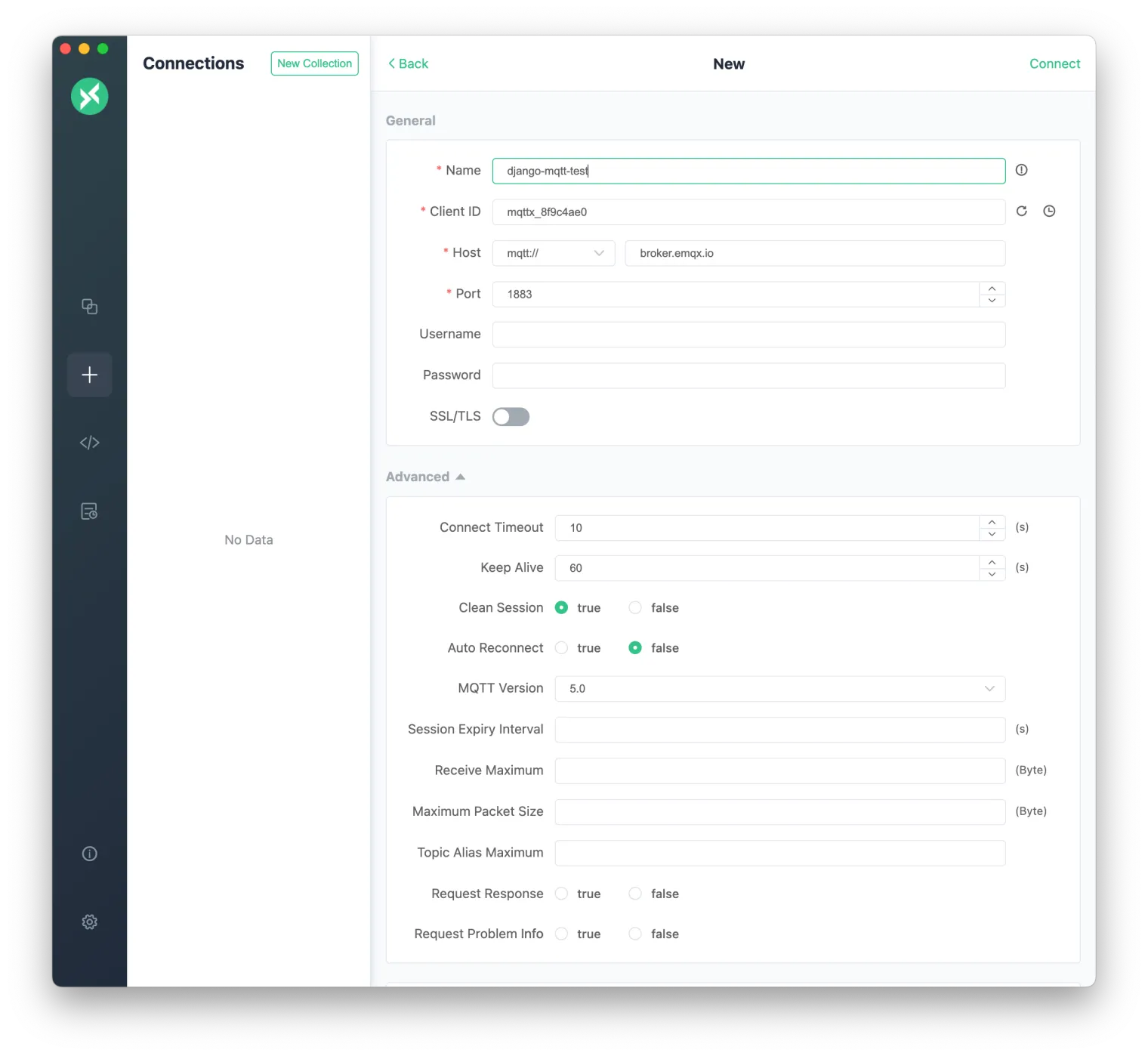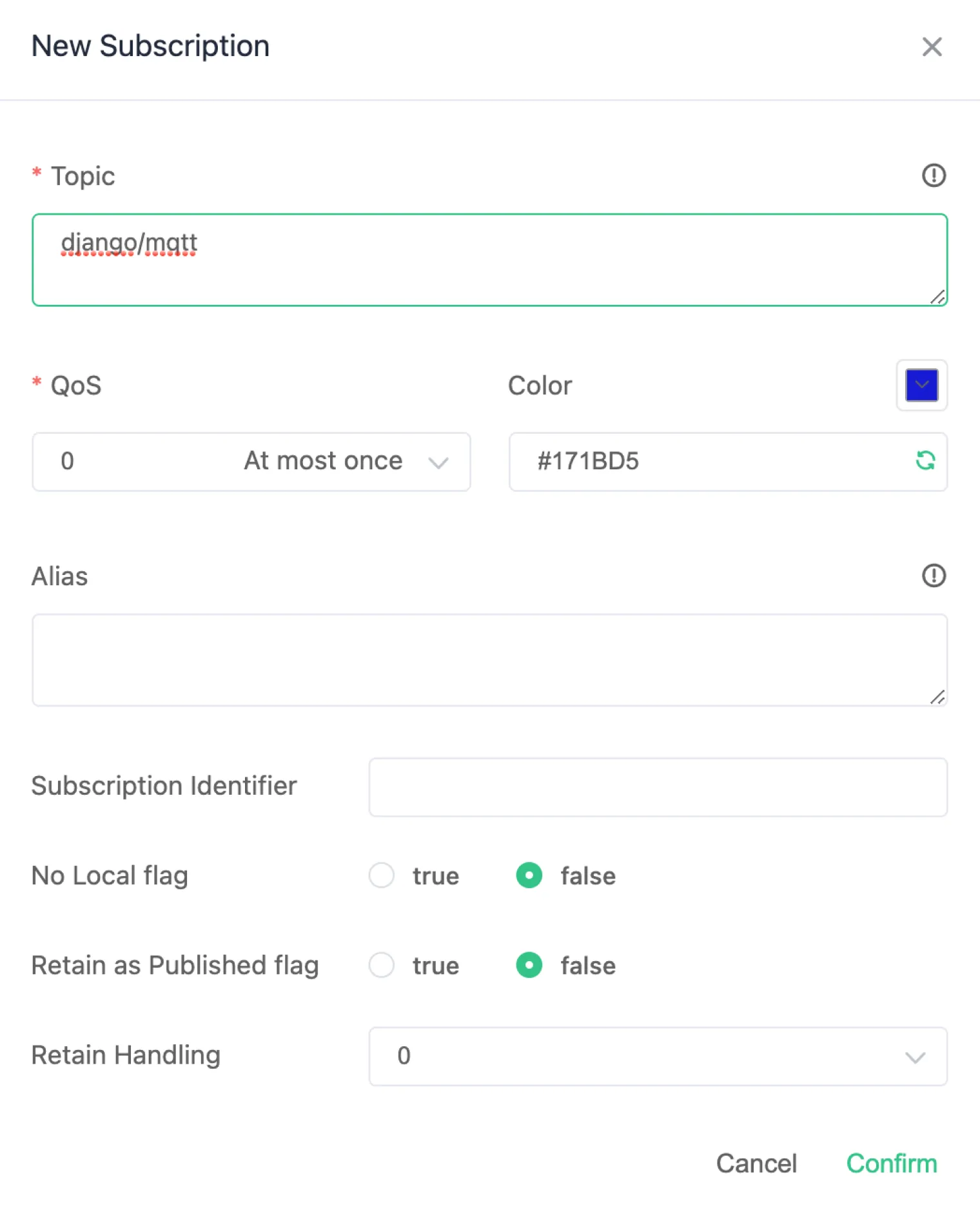How to Use MQTT in The Django Project
This article mainly introduces how to connect, subscribe, unsubscribe, and send and receive messages between MQTT clients and brokers in the Django project.
Join the DZone community and get the full member experience.
Join For FreeMQTT is a lightweight IoT messaging protocol based on publish/subscribe model, which can provide real-time reliable messaging services for connected devices with very little code and bandwidth. It is widely used in industries such as IoT, mobile Internet, smart hardware, Internet of vehicles, and power and energy.
Django is an open-source Web framework and one of the more popular Python Web frameworks. This article mainly introduces how to connect, subscribe, unsubscribe, and send and receive messages between MQTT clients and MQTT brokers in the Django project.
We will write a simple MQTT client using the paho-MQTT client library. paho-mqtt is a widely used MQTT client library in Python that provides client support for MQTT 5.0, 3.1.1, and 3.1 on Python 2.7 and 3.x.
Project Initialization
This project uses Python 3.8 for development testing, and the reader can confirm the version of Python with the following command.
$ python3 --version
Python 3.8.2Install Django and paho-mqtt using Pip.
pip3 install django
pip3 install paho-mqttCreate a Django project.
django-admin startproject mqtt-testThe directory structure after creation is as follows.
├── manage.py
└── mqtt_test
├── __init__.py
├── asgi.py
├── settings.py
├── urls.py
├── views.py
└── wsgi.pyUsing Paho-MQTT
This article will use free public MQTT Broker provided by EMQ. The service is created based on MQTT Cloud service - EMQX Cloud. The server access information is as follows:
- Broker:
broker.emqx.io - TCP Port:
1883 - Websocket Port:
8083
Import Paho-MQTT
import paho.mqtt.client as mqttWriting Connection Callback
Successful or failed MQTT connections can be handled in this callback function, and this example will subscribe to the django/mqtt topic after a successful connection.
def on_connect(mqtt_client, userdata, flags, rc):
if rc == 0:
print('Connected successfully')
mqtt_client.subscribe('django/mqtt')
else:
print('Bad connection. Code:', rc)Writing Message Callback
This function will print the messages received by the django/mqtt topic.
def on_message(mqtt_client, userdata, msg):
print(f'Received message on topic: {msg.topic} with payload: {msg.payload}')Adding Django Configuration Items
Add configuration items for the MQTT broker in settings.py. Readers who have questions about the following configuration items and MQTT-related concepts mentioned in this article can check out the blog The Easiest Guide to Getting Started with MQTT.
This example uses anonymous authentication, so the username and password are set to empty.
MQTT_SERVER = 'broker.emqx.io'
MQTT_PORT = 1883
MQTT_KEEPALIVE = 60
MQTT_USER = ''
MQTT_PASSWORD = ''Configuring the MQTT Client
client = mqtt.Client()
client.on_connect = on_connect
client.on_message = on_message
client.username_pw_set(settings.MQTT_USER, settings.MQTT_PASSWORD)
client.connect(
host=settings.MQTT_SERVER,
port=settings.MQTT_PORT,
keepalive=settings.MQTT_KEEPALIVE
)Creating a Message Publishing API
We create a simple POST API to implement MQTT message publishing.
In actual applications, the API code may require more complex business logic processing.
Add the following code in views.py.
import json
from django.http import JsonResponse
from mqtt_test.mqtt import client as mqtt_client
def publish_message(request):
request_data = json.loads(request.body)
rc, mid = mqtt_client.publish(request_data['topic'], request_data['msg'])
return JsonResponse({'code': rc})Add the following code in urls.py.
from django.urls import path
from . import views
urlpatterns = [
path('publish', views.publish_message, name='publish'),
]Start the MQTT Client
Add the following code in __init__.py.
from . import mqtt
mqtt.client.loop_start()At this point, we have finished writing all the code, and the full code can be found on GitHub.
Finally, execute the following command to run the Django project.
python3 manage.py runserverWhen the Django application starts, the MQTT client will connect to the MQTT Broker and subscribe to the topic django/mqtt.
Testing
Next, we will use an open-source cross-platform MQTT client - MQTT X, to test connection, subscription, and publishing.
Test Message Receiving
Create an MQTT connection in MQTT X, enter the connection name, leave the other parameters as default, and click the
Connectbutton in the upper right corner to connect to the broker.![Create an MQTT connection in MQTT X,]()
Publish the message
Hello from MQTT Xto thedjango/mqtttopic in the message publishing box at the bottom of MQTT X.![the message publishing box at the bottom of MQTT X]()
The messages sent by MQTT X will be visible in the Django runtime window.
![The messages sent by MQTT X will be visible in the Django runtime window.]()
Test Message Publishing API
Subscribe to the
django/mqtttopic in MQTT X.![Test Message Publishing API]()
Use Postman to call
/publishAPI: publish the messageHello from Djangoto thedjango/mqtttopic.You will see the messages sent by Django in MQTT X.
![messages sent by Django in MQTT X.]()
Summary
At this point, we have completed the development of the MQTT client using paho-mqtt, enabling communication using MQTT in Django applications. In practice, we can extend the MQTT client to achieve more complex business logic based on business requirements.
Published at DZone with permission of Ming Zhao. See the original article here.
Opinions expressed by DZone contributors are their own.






Comments